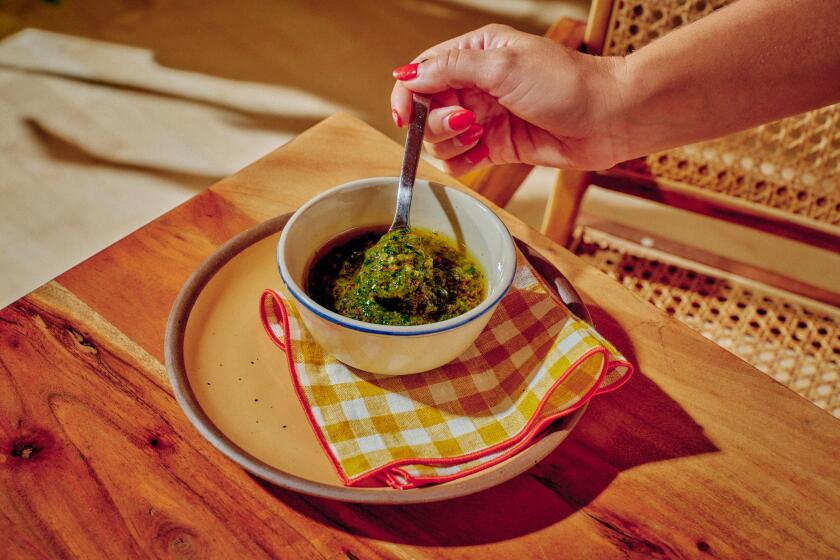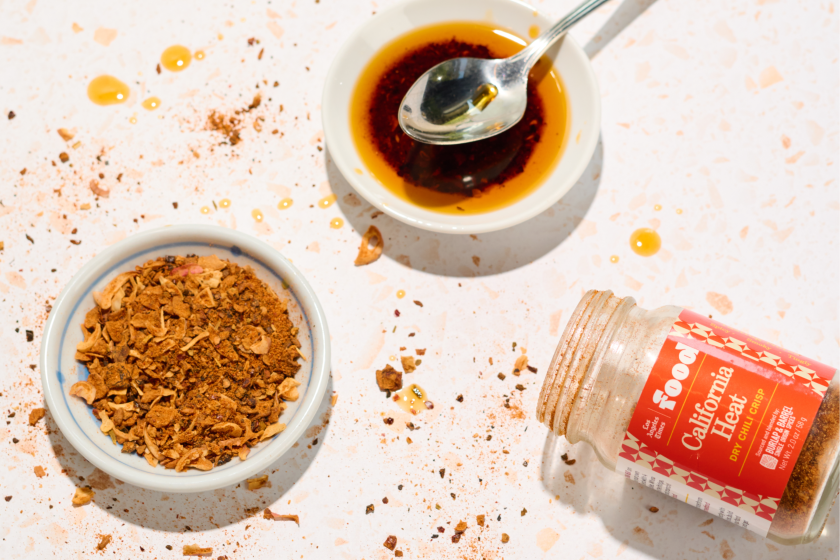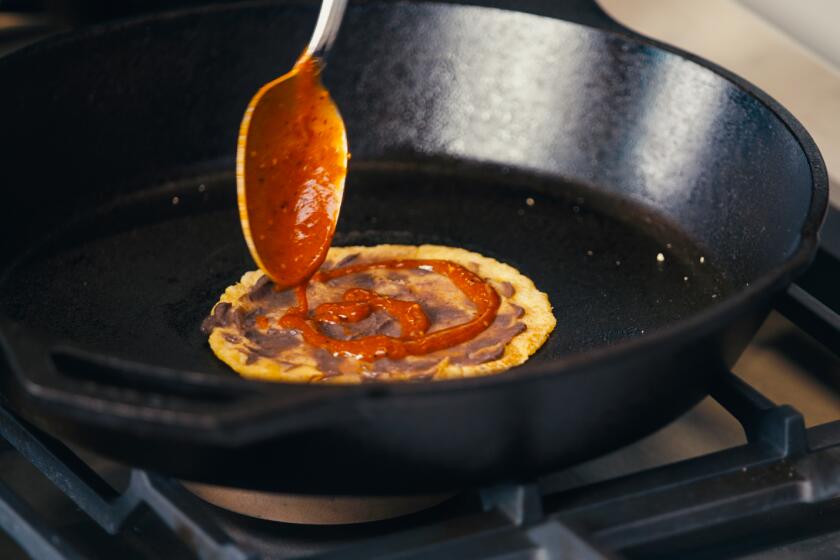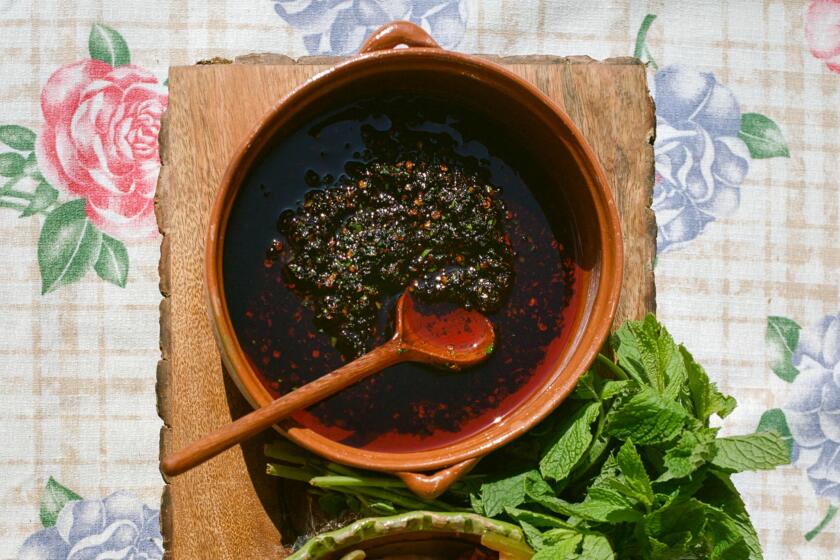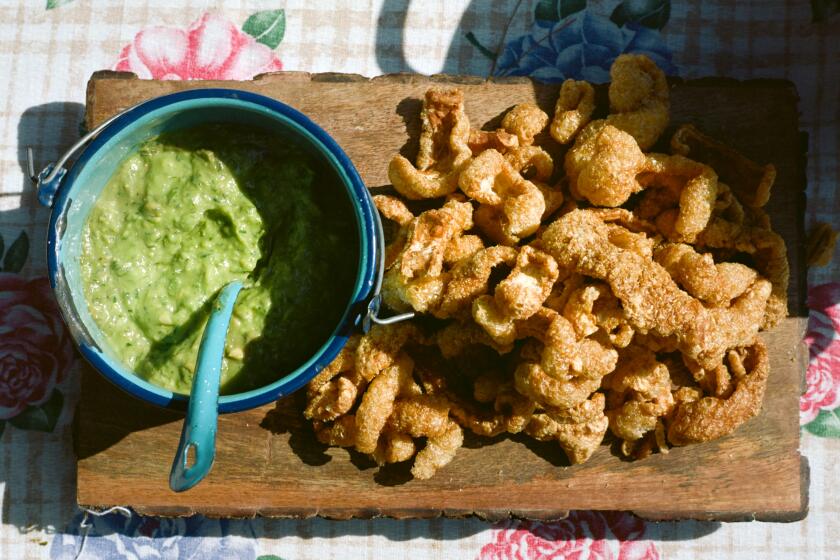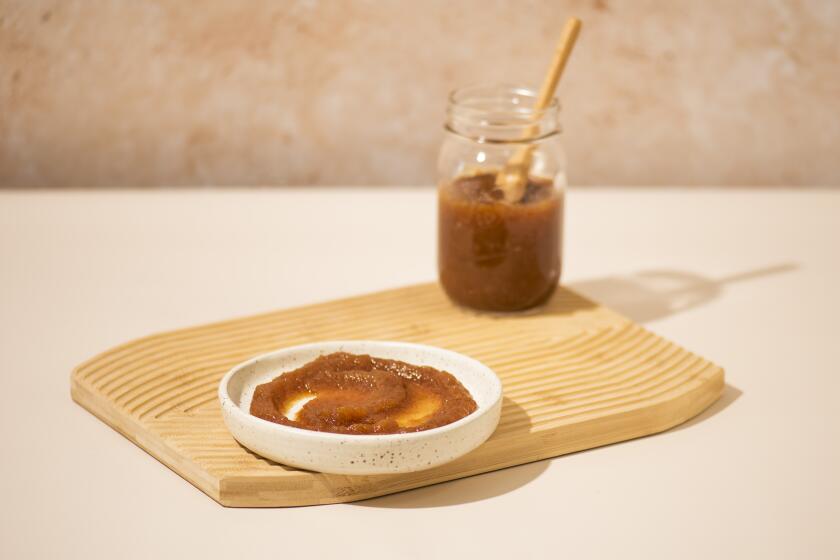Caramelized pineapple confit
This weekend, I picked the first tomatoes of the season from our little vegetable garden out back. It felt like an eternity before the fruit on those massive plants finally ripened; now all of a sudden the garden is littered with bright red tomatoes. I spent the weekend tossing them in with salads and grilling thick slices with a little salt and cracked pepper, fixing tomato ānā mayo sandwiches and toasting the summerās bounty with Bloody Marys.
Of course, even though itās been less than a week since I picked the first tomato, Iāve already realized Iāll have to be more creative in the kitchen or that summer bounty will turn into a curse. So I decided to experiment. With confit.
The definition has evolved over time, but confit traditionally has referred to anything that is cooked slowly in fat. Originally, it was a way to preserve food. Now we do it just because itās so delicious. The method is simple: Immerse an ingredient in fat and cook gently to moist tenderness. Why fat? Because it imparts flavor. Amazing flavor.
Back in the kitchen, I halved a few pounds of tomatoes and arranged them on the bottom of a roasting pan. I scattered over a few cloves of garlic and some fresh thyme, and seasoned them with a few grinds of black pepper. Then I added a layer of bacon, slightly overlapping each strip to cover the tomatoes like a blanket. As I roasted the tomatoes, the rendered bacon slowly dripped down over them, gently infusing them with flavor. When the aroma was almost too much to bear, I pulled the pan from the oven and lifted the layer of crisp bacon. Roasted tomato confit. Using bacon fat.
Tomato confit is nothing new -- there are a number of variations using oil -- but when done with bacon fat, the flavors were fresh yet rich, the bright acidity from the tomatoes a perfect counterpart to the smokiness of the bacon, the garlic and thyme adding nicely to the harmony. It was rich enough to work as a main course, served simply over a bed of fresh pasta with a few shavings of Parmesan. But it also works coarsely chopped and spooned over crostini. It would be great tucked into a grilled cheese sandwich.
Confit is one of the oldest cooking techniques in the book. It has been used across cultures since ancient times to keep meat from spoiling. Cooks learned early on that if you store something under an airtight layer of fat, it lasts longer.
It also tastes good. With the dawn of modern preservation techniques, such as refrigeration and canning, some classic techniques have been lost to time. Others, such as smoking, curing, pickling and confiting, have stayed with us because of the wonderful flavors they impart on food.
āConfitā has most famously referred to the French method of cooking goose, duck or pork in its own fat. After the autumn slaughter, when the birds were fattened, farmers would āconfitā all that meat over low heat for hours to preserve it over the winter. These meats were then used to flavor rich and hearty stews and soups, perfect for cold weather meals.
Today almost anything can be āconfitedā using a variety of fats. Variations are no longer limited to midwinter meals, and the cooking process doesnāt necessarily have to take all day.
Try a riff on potted shrimp (shrimp gently poached in butter). Toss a pound of shrimp with a batch of charmoula (a North African spice blend of garlic, ginger, cilantro and lemon balanced with a little cayenne pepper and paprika) and cook them gently, covered with olive oil until the shrimp are opaque and firm, about 30 minutes.
Serve the shrimp simply over a mound of couscous or rice with a fresh squeeze of lemon, or toss them with a simple salad.
Most of us may think savory when we hear confit, but the method is just as applicable to the sweet realm in the kitchen. The word āconfitā comes from the French verb confire, which translates as āto preserveā and āto candy.ā Food science writer Harold McGee mentions that it was originally used in medieval times to refer to fruits cooked in sugar or alcohol for preservation (hence, the word āconfectionā).
To make a fruit confit, brush sliced pineapple with brown sugar whisked together with a little dark rum. Place the pineapple under the broiler long enough for the sugar to caramelize, then toss the pineapple with a simple syrup spiced with cinnamon, star anise and pepper and flavored with a little more rum. Gently simmer the pineapple just long enough to infuse the flavors and thicken the syrup. The confit stores easily in the fridge, ready to go, whether topping a cold scoop of ice cream or a warm breakfast waffle.
Just the other evening, I grilled a few slices of angel food cake (just a minute or so on each side -- the grilling caramelizes the sugar in the cakes for great flavor) and topped each with a generous scoop of vanilla ice cream. Finally, I drizzled a spoonful of the pineapple confit over each serving. It was a definite showstopper.
Now if I could just find some way to combine it with tomatoes.
Heat the broiler.
Peel and core the pineapple, cutting it into slices one-half-inch thick. Place the pineapple slices onto a foil-lined baking sheet.
In a small bowl or measuring cup, stir together one-fourth cup rum with one-fourth cup sugar. Brush the rum and sugar mixture over the sliced pineapple.
Place the pineapple under the broiler and broil until the pineapple is a rich golden-brown in places and the sugar is caramelized, 6 to 10 minutes, depending on the moisture in the pineapple and heat of the broiler.
Remove from heat and set the baking sheet with the pineapple aside to cool, then cut the slices into one-half-inch chunks.
While the pineapple is cooling, combine the remaining rum, sugar, water, long peppers, cinnamon and star anise in a large saucepan. Bring the mixture to a boil over high heat, stirring occasionally.
Add the pineapple chunks to the mixture, reduce the heat to a simmer, and continue to cook until the pineapple is tender and the flavors are married, 10 to 15 minutes. Remove from heat and stir in the vanilla seeds and pod.
Place the mixture in a glass jar or bowl and set aside until cool. Cover tightly and refrigerate until needed. The confit will keep for up to two weeks, covered and refrigerated.
Get our Cooking newsletter.
Your roundup of inspiring recipes and kitchen tricks.
You may occasionally receive promotional content from the Los Angeles Times.











